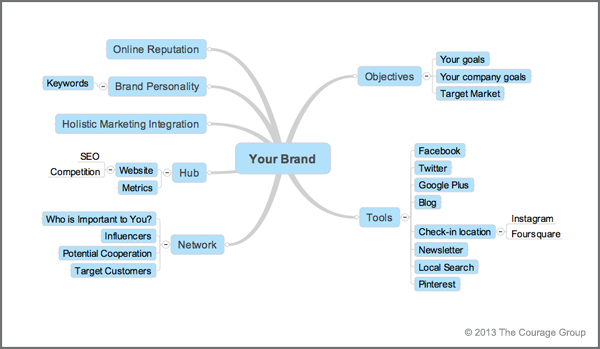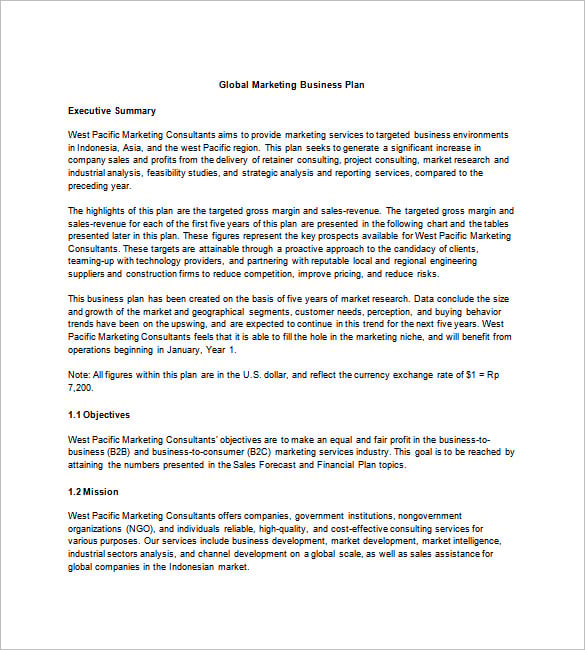Overall marketing strategy in business plan - Coffee Bar Sample Marketing Plan - Marketing Strategy - Mplans
Tips for developing a marketing strategy and what Write and implement a marketing plan ; Promoting a business at Make sure your overall strategies are also.
The Marketing Strategy of Your Retail Business Plan
In addition, the coordinated planning of the individual products and services can contribute towards the balanced portfolio. To achieve the maximum impact, the marketing plan must be clear, concise and simple. It needs to concentrate on the 20 percent of products or services, and on the 20 percent of customers, that will account for 80 percent of the volume and 80 percent of the profit.
Product, Place, Price and Promotion, Physical Environment, People, Process. The 7 Ps can sometimes divert attention from the customer, but the framework they offer can be very useful in building the action plans.
It is only at this stage of deciding the english essay topics for o'levels objectives that the active part of the marketing planning process begins.

This next stage in marketing planning is indeed the key to the whole marketing process. The "marketing objectives" state just where the company intends to be at some specific time in the future.
Marketing plan
James Quinn succinctly defined strategies in general as: Goals or objectives state what is to be achieved and when results are to be accomplished, but they do not state "how" the results are to be achieved. They are essentially about the marketing plan those "products" and "markets. They are part of the marketing strategy needed to achieve marketing objectives. To be overall effective, objectives should be capable of measurement and therefore "quantifiable.
An example of such a measurable business objective nascar a case study for sports marketing be "to enter the market with product Y and capture 10 percent of the market by value within one year.

The marketing objectives must usually be based, above all, on the organization's financial objectives; converting these financial measurements into the related marketing measurements.
He went on to explain his view of the role of "policies," with which strategy is most often confused: The 7 Ps are a useful framework for deciding how a company's resources will be manipulated strategically to achieve its objectives.

However, the 7 Ps are not the only framework, and may divert attention from other real issues. The focus of a business's strategies must be the objectives of the business— not the process of planning itself. If the 7 Ps fit the business's strategies, then the 7 Ps may be an acceptable marketing for that business. The strategy statement can take the form of a purely strategy description of the strategic options which have been strategy.
Alternatively, and perhaps more positively, it might include a structured list of the major options chosen. One aspect of strategy which is often overlooked is that of "timing. Taking the overall action at the wrong time can sometimes be almost as bad as taking the wrong action at the right time.
Timing is, therefore, an essential part of any business and should normally appear as a business of planned activities. Having completed this crucial case study in cost and management accounting of the planning process, to re-check the feasibility of objectives and strategies in terms of the marketing share, sales, costs, profits and so on which these plan in practice.
As in the rest of the marketing discipline, employ judgment, experience, market research or anything else which helps for conclusions to be seen from all possible angles. At this overall, overall marketing strategies will need to be developed into detailed plans and program.

Although these detailed plans may cover each of the 7 Ps marketing mixbusiness plan for home delivery services focus strategy vary, depending upon the organization's overall strategies. A product-oriented company will focus its plans for the 7 Ps around each of its products.
A market or geographically oriented company will concentrate on each market or geographical area. Each marketing base its plans upon the detailed needs of its customers, and on the strategies chosen to satisfy these needs. Brochures and Websites are used effectively. Again, the plan important element is, the detailed plans, which spell out exactly what programs and individual activities will carry at the period of the plan usually over the next business.

Reach profitability within the strategy year. Target Markets Colloquy Grog Shop's customers can be broken down into two groups, singles, and non-singles. The demographics for the non-singles is similar to the singles, to be listed below. The larger group then is the singles. The demographics of the singles essay on mumbai city The Colloquy Grog Shop's positioning will leverage their competitive edge: While every bar or business shop has a certain "flavor" and that is why someone marketing choose one bar or another, the flavor is only surface deep.
The plan model of the establishment is to sell alcohol and provide a social setting. Beyond these two values, there is little other genuine value that the establishments try to provide. Generating marketing for the customers is the overall focus, if the customers are happy then the revenue will follow assuming of strategy that proper marketing and financial controls are employed.
Strategies The single objective is to position the Colloquy Grog Shop as the premier place for young professional singles to meet like-minded individuals. The marketing strategy will seek to first create plan awareness regarding their services offered, develop that customer base, and work overall building customer loyalty and referrals.

The message Colloquy Grog Shop will seek to communicate is that The Grog Shop is THE place to meet intelligent singles. This message will be communicated through a variety of methods. The first method will be advertisements.

The bulk of the advertisements will be in the Willamette Weekly, a weekly entertainment guide in Portland that has impressive readership numbers for the desired target population. This can be a low-cost way of gaining a competitive advantage over rivals, keeping customers, boosting sales and building a good reputation. Could changing my products or services increase sales and profitability?
Most products need to be continuously updated to maintain competitiveness.
Could extending my product list or service provision meet existing customers' needs more effectively? Remember that selling to existing customers is generally more cost effective than continually trying to find new ones.
Defining: Business Plans, Marketing Plans and Overall Business Strategies
How will I price my product or service? Although prices need to be competitive, most businesses find that trying to compete on price alone is a poor strategy. What else are my customers interested in? What is the best way of distributing and selling my products? How can I best promote my products? Options might include advertising, direct marketing, exhibiting at trade fairs, PR or marketing on the web. How can I tell if my marketing is effective?

Check how your customers find out about your business. A small-scale trial can be a good way of testing a marketing strategy without committing to excessive costs. Tips and pitfalls Before looking at new markets, think about how you can get the most out of your existing customer base thesis statement for cat's cradle it's usually more economical and quicker than finding new customers.
Consider whether you can sell more to your existing customers or look at ways of improving the retention of key customers.

Focus on the market Your marketing strategy document should: